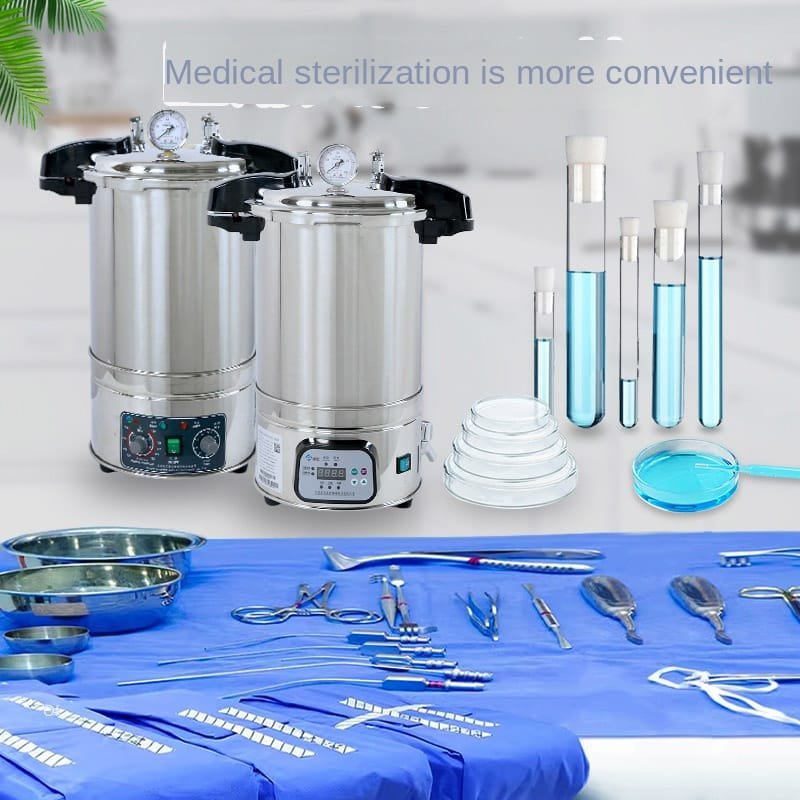
Check Water Levels: Fill the water reservoir with distilled water until it reaches the recommended level.
Inspect the Door Gasket: Examine the door gasket for any signs of cracking, tearing or deterioration and replace it when necessary.
Clean the Chamber: Remove debris or residue from the chamber by wiping it with a damp cloth.
Run a Test Cycle: Operate a brief sterilization cycle to verify proper autoclave operation.
Weekly Maintenance
Clean the Drain Valve: Eliminate any buildup or debris that could lead to blockages.
Inspect Steam Lines: Check the steam lines for blockages or leaks and remove them when they are found.
Check Pressure and Temperature Gauges: Ensure they are accurate and functioning properly.
Clean the Exterior: Clean the exterior surface by wiping away dust and dirt.
Monthly Maintenance
Deep Clean the Chamber: Apply mild detergent or autoclave cleaner to eliminate stubborn residue from the chamber.
Inspect Electrical Connections: Make sure all electrical connections remain tight and show no signs of corrosion.
Test Safety Features: Ensure the door safety lock functions properly along with the pressure release valve.
Replace Filters: You need to replace the water or air filters in your autoclave whenever necessary.
Professional Servicing: Book an annual service appointment with a technician to perform maintenance on the autoclave.
Calibrate Instruments: Maintain correct calibration of pressure and temperature gauges to ensure measurement accuracy.
Replace Worn Parts: Exchange all damaged or worn components including gaskets and seals.
Distilled water helps prevent mineral buildup inside the chamber and steam lines.
Proper steam circulation and autoclave durability are maintained by preventing excessive loading.
Always follow your autoclave manufacturer’s maintenance schedule and procedures.
Maintaining your autoclave regularly ensures its optimal performance and condition. Maintaining your autoclave through daily, weekly, monthly, and annual tasks will lengthen its lifespan while reducing downtime and producing dependable sterilization outcomes. Any medical, laboratory, or industrial facility benefits from having a well-maintained autoclave.
The door gasket should be replaced every 6–12 months or whenever you observe wear signs like cracks or leaks.
You must use distilled water exclusively to avoid mineral deposits that damage the autoclave.
Look for usual problems such as insufficient water levels and blocked drains. If the problem persists, contact a technician.
Clean the chamber by wiping with a soft cloth and a mild detergent or autoclave cleaner. Avoid abrasive materials.
If your autoclave makes strange sounds it might be experiencing blockages or component failures and may also have insufficient water levels. Examine the autoclave immediately to resolve any problems.
The article contains a comprehensive maintenance guide to assist users in maintaining their autoclave’s optimal condition. Please tell me if you want to move forward with the next article.
Why Autoclave Is The Best Method Of Sterilization